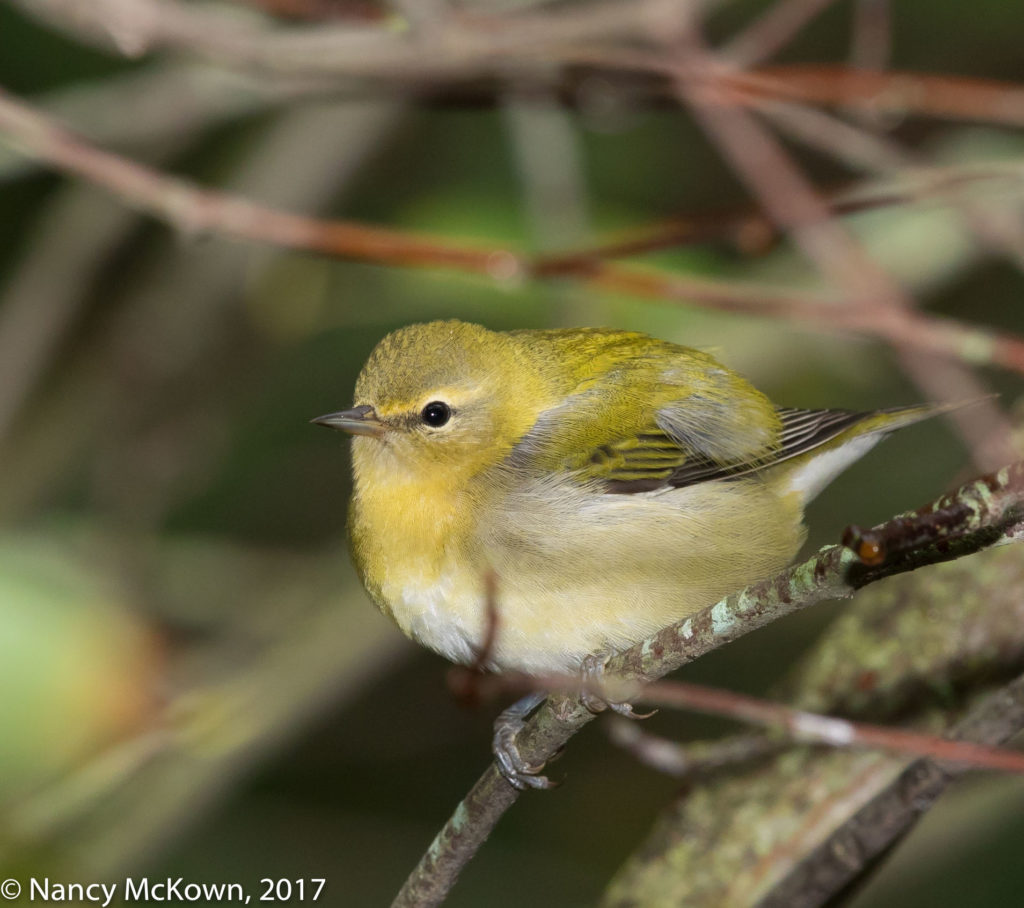Photographing a Tennessee Warbler
I still can not ID a Tennessee Warbler quickly. A dark line through the eyes accented with long white eyebrows are most often used as the determining factors. My bird books refer to this species as “dull”, most likely because nothing really stands out color or pattern wise on the plumage – especially compared to other warblers.
I don’t think so.
These warblers are so individually distinct! Different gradations of yellow, gray, black and olive green are entwined throughout the plumage. The first image shows an individual with delicately understated colors…olive gray feathers on the head streaming down into the plumage on his back. The second image captures a very different pose and package, with a burst of daffodil yellow on the breast. No doubt the flash made those flaxen colors pop. Different birds, both captured in the Autumn of 2017.

Expansive View of his Background.
ISO400; f/8; 1/250 Second
Creative Anticipation
So…. what to take in when photographing birds? Do I want a tack sharp close-up where the image is so crisp that I can almost touch the playful plumage patterns and textures and count the feathers? Or should I expand the boundaries and create a sense of space, take in more of the mood of the landscape, the intensity and hue of colors, and the expressive lines and curves?
Photographers can create meaning and tell a story through their work. However, in bird photography, it is not often possible to follow through on pre-visualization routines… to capture the image exactly as you imagine it.
Pre-Visualize or Crop
No doubt some artsy photographers might think that the only way to do photography right is to start with compositional building blocks, to thoughtfully pre visualize and then frame in-camera. Zooming and cropping afterwards, (or any post production process for that matter) would be “cheating”.
I tend to operate in the reverse. Given the realities of the fast and frantic world of bird photography, I’d say that I end up cropping at least 90% of my images… and possibly more.

Close up view.
ISO400; f/8; 1/250 Second
The Power of Framing
The more I look at a digital image of a bird, the more I know what to do. The power of framing through post processing helps me be less sloppy, snip away at the discordant parts, break away from standard aspect ratios. I push and pull the Lightroom crop tool every which way… trying to determine what looks best and to get rid of distractions. Post production is just another set of tools I use to create the look I want.
Bottom Line: The photographer should decide what looks best, whether it be fanciful or faithful to the scene and subject, and not let other elevated egos decide for her.
NOTE: Pre-visualizing is a more time consuming endeavor when photographing with a long lens. Most often, my binocular vision is not engaged while peering through my 500mm monster lens. I try to avoid the disorientation that comes with overlapping fields of view that consist of one eye seeing a magnified limited field of vision and the other eye looking without magnification at a much wider field of view.








